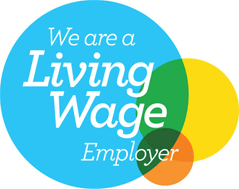Flexible Parental Leave: Guidance For Businesses & Employees
The Government recently announced further details about a brand new form of leave, ‘Flexible Parental Leave’, where parents can share the traditional maternity leave and pay. Martin Searle Solicitors participated in the consultation process to provide our views on these new rules. As we act for both businesses and employees we are in an informed position to comment on how both parties will be affected when the new rules come into force in 2015.
The changes will affect those families where both parents are working. They aim to enable both parents (including those adopting children) to share leave and pay so that they can more easily combine childcare with working. This is a welcome step and one that we hope will be positive for all.
It is important to note that the current system of unpaid Parental Leave will continue to exist alongside this new flexible parental leave system. Under new proposals from 2013, unpaid Parental Leave has been extended from 13 to 18 weeks for each child and from 2015 it will be available for parents of all children up to the age of 18 – rather than up to the age of 5 as it is now.
What we have now
Currently Maternity Leave lasts 52 weeks. During 39 of those weeks, women usually receive Statutory Maternity Pay. Fathers can take two weeks Paternity Leave and receive two weeks Paternity Pay (if eligible). This type of Paternity Leave will not change with the introduction of flexible parental leave in 2015.
Fathers to be or those that share the responsibility with a partner for bringing up a child can currently take Additional Paternity leave when their baby is 20 weeks old and above. However, this will be abandoned in 2015.
The new system
Under the proposed changes, where partners choose to opt into the flexible parental system, flexible parental leave and pay can be taken by each parent. Significantly, when a woman to returns to work and ends her maternity leave this will not end the leave period as it will continue as ‘flexible parental leave’. This is equal in length to the untaken balance of maternity leave.
From 2015, once a mother has taken two weeks’ maternity leave, the remaining 50 weeks can be shared flexibly with her partner. A mother will need to notify the date that she plans to end her maternity leave in advance, and the ‘balance’ then becomes available to her and her partner. In addition, a partner will be able to start taking flexible parental leave whilst the mother is still on maternity leave. This will allow parents to choose to take leave at the same time to spend time at home with the baby. Although partners can do this now, this only applies to two weeks Paternity Leave, after which they must return to work in order to keep their jobs. Parents will be asked to be as ‘open’ as possible about their intentions and to give employers ‘proper notice’ so that any possible disruption in the workplace will be minimised.
Leave patterns
Flexible parental leave will be available in ‘blocks’ of no shorter than a week, in a pattern of their choice, as long as their employer agrees and notice has been given. Parents will be required to give at least eight weeks notice of any leave they will actually be taking. They can only give two further notifications or changes which have to be mutually agreed between employer and employee.
Employers will be relieved to see that the proposals set out that where employers and employees cannot agree on a proposed flexible pattern of leave, the default position will be that the employee takes the full amount of leave available to them in a single continuous bock to start on a date of their choosing.
Returning to the same job
Employees returning from flexible parental leave will have the right to return to the same or a similar job irrespective of how much leave they have taken. If they take up to 26 weeks they can return to the same job. Once they have exceeded 26 weeks’ leave, they would only have the right to return to the same or a similar job. Each parent will also have 20 ‘keeping in touch’ days.
Statutory Flexible Parental Pay
A new form of statutory pay called ‘Statutory Flexible Parental Pay’ will be paid to an employed mother or father or those that will share responsibility for bringing up a child with a partner, if they meet the eligibility criteria. The pay will match the rate of the lower rate of the current Statutory Maternity Pay (2013-2014 £136.78 per week). This will be available to parents during the period covering the untaken balance of a woman’s Statutory Maternity Pay (or Maternity Allowance if she receives this). Employers will have to administer the system of payment as they do now, and then reclaim the payments from the Government.
All these new rights are contained within the Children and Families Bill 2013 which is currently going through Parliament. We will let you know the finer details as they are announced and as the wider business implications become clearer.
The new system will present logistical challenges to many businesses, particularly those that have a majority of male employees and who are unaccustomed to dealing with the issues raised by employees taking leave of up to a year.
However, one of the most insidious forms of sex discrimination is found in those companies with a hidden agenda of not recruiting women of childbearing age. If flexible parental leave is a success, this will go some way towards stopping a form of discrimination which is very difficult to prove. Men have a much wider window for procreation and employers will be less able to gauge whether their job applicant is likely to want to take parental leave in the near future. This will of course depend on the uptake of flexible parental leave. Much will depend on the economic realities for each individual family, as it is usual for the higher paid parent to continue to work.
We would expect larger businesses to be much better positioned to adapt to these changes, as many have dedicated HR and the financial resources to monitor shared parental leave patterns. It is going to be important for the Government to provide detailed, plain-speaking guidance for small businesses.
As a law firm committed to best practice, we will be providing free seminars and a new campaign, “From Here to Paternity” in 2014. This will concentrate on providing free training and support on these new flexible working rights to ensure our business community is fully prepared for these changes.
We believe this is a real opportunity to address inequality and to create a “modern workplace” which capitalises on the benefits that flexible working can offer, such as retaining a highly skilled, motivated and happy workforce.



